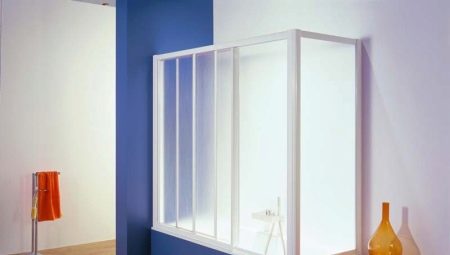A bath or shower in the apartment is used almost daily. No matter how carefully you wash, you rarely get rid of water splashing. This not only threatens the appearance of mold and mildew due to increased humidity in the room, but can also cause a fall on slippery tiles. You can solve the problem using a special screen, the features and varieties of which will be discussed in our article.
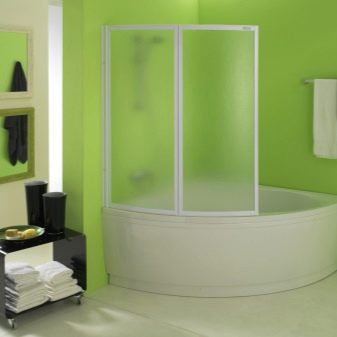
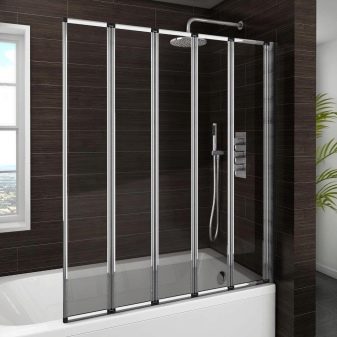
Features
Often, users hang special polyethylene curtains in the bathroom, the purpose of which is to protect the room from water splashing when taking a bath. This option can be called one of the most popular because of the low material costs and ease of installation of curtains. In addition, such a product is presented in a wide assortment, from which you can choose your own product to your liking.
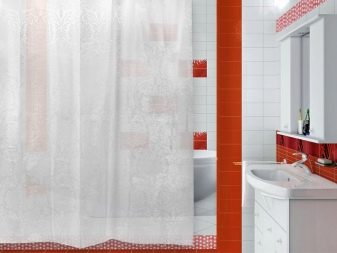
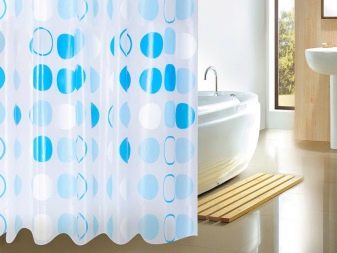
However, not everyone considers the method ideal:
- over time, limescale will form on the polyethylene;
- polyethylene often sticks to a wet body, giving not the most pleasant sensations;
- Another disadvantage is the fragility of the material.
However, these problems can be avoided. A more modern way to protect the premises from moisture by installing a special screen. I must say that the device is not only convenient but also durable. You can buy it in a store or make it yourself if you have basic knowledge and skills.
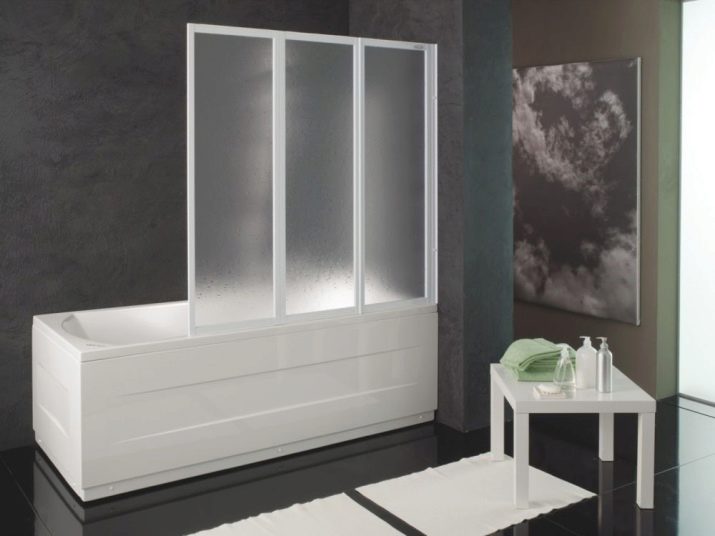
Among the advantages of screens, having several varieties, reliability, ease of care and a presentable appearance can be noted. Such products reliably protect the surface of the bathroom from water splashes.
Good sealing of the joints allows the space around the bath to always remain dry.
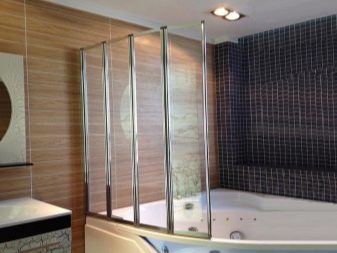

Special care for the screens is not required - they are easy to clean. And their design and sizes have many options, so there is no problem with the choice. In addition, each of the varieties of the bathroom screen has its own characteristics. About it - further.
Species overview
Screens can be called universal products. No additional installation space is required. If we are talking about stationary models, they are securely fixed to the walls of the room or the sides of the bath. The following varieties are distinguished.
By type of construction
For this indicator, we can distinguish screens:
- wireframe;
- frameless;
- combined;
- whole;
- compound.

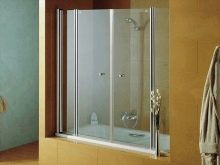
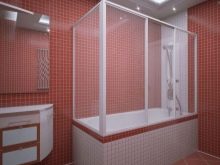
The frame is a structure primarily made of plastic or aluminum. The frame is responsible for the operation of the screen.
Models without a frame are most often made of durable glass with a thickness of about 6-8 mm.

For frame products, the thickness is 4-5 mm.
A whole screen is most often used when it is necessary to separate any particular area. If we are talking about solid frameless products, then they usually have a rather high price, but they also look very stylish and elegant.

Composite screens are a sliding type design. There is a certain number of panels made of glass and plastic, which can vary to a specific size. Experts note that the models that have two fixed side elements and two moving ones are most in demand.
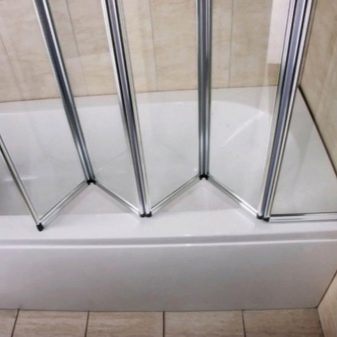
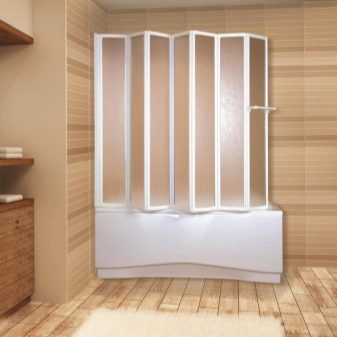
By way of opening
According to this indicator, sliding, oar and "accordion" screens are distinguished.
Sliding screens are great for small bathtubs.. They are able to organize a kind of glass house. Sashes move along the profiles located at the top and bottom, thereby opening and closing the passage. To avoid the feeling of confined space, experts recommend opting for transparent designs, as well as properly organize lighting.
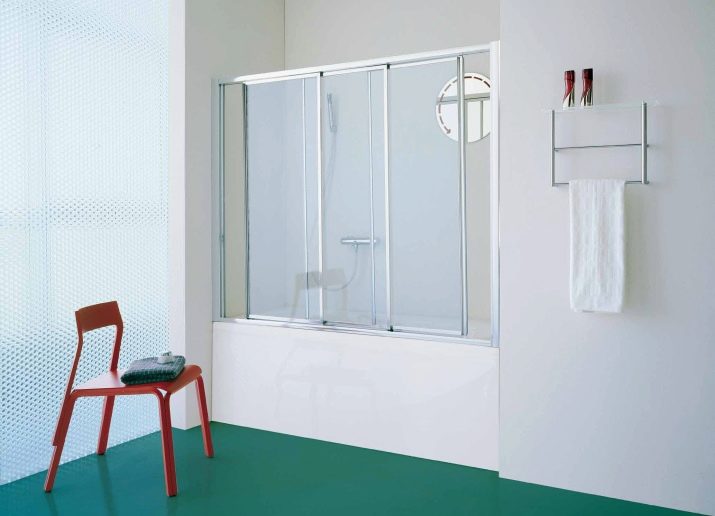
Often, users make the choice in favor of a folding "accordion". It easily slides into a corner, and when straightened provides a protective surface. However, some users note the disadvantages of such structures, for example, their fragility and possible breakdowns in the places of fastenings, of which there are many.
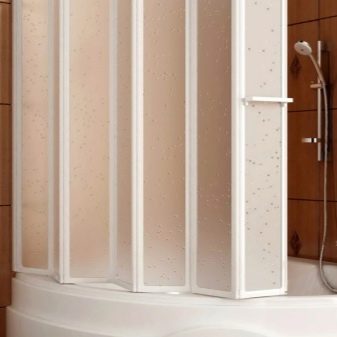
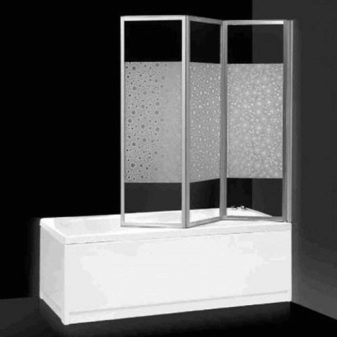
Swing screens cannot be ignored, although such designs are less popular. The fact is that they require free space for opening, so they can only be installed in bathrooms of a significant size.
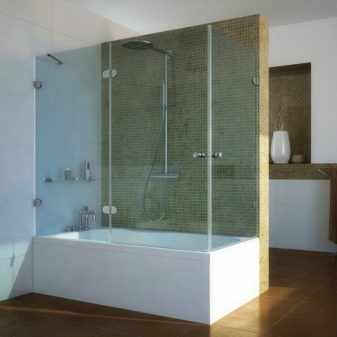

Materials
Screens are mainly made of glass and plastic. Each option has its advantages.
Plastic models are rightfully considered the most popular. An affordable role plays an important role in this. However, there are a number of other positive aspects.
The plastic construction is easy to install even when the walls are not perfectly even. In addition, it can be made independently. Installation is also easy. You can opt for transparent paintings, which are an excellent imitation of glass. Here you can choose a product in the desired color scheme, a variety of options will not leave the buyer indifferent.
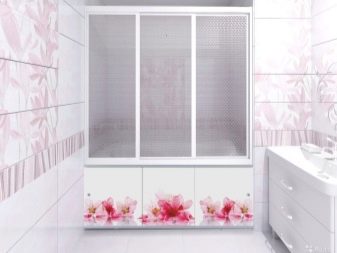
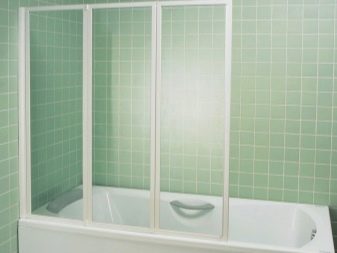
You can choose a screen to fit any bathroom. The number of flaps also varies. This allows you to create the image that is needed in each case.
However, it would be unfair not to mention the disadvantages of such designs. The plastic surface is prone to rapid contamination. Plaque from salts contained in water must be carefully cleaned using special means.
In addition, plastic can not be called the most environmentally friendly material. At high temperatures, it can vaporize harmful substances.Of course, their level is low, but the fact itself is still unpleasant.
Plastic screens lose their attractive appearance faster than glass. They do not tolerate mechanical stress, are easily scratched, bent and broken. However, this option is still much more preferable and durable than conventional curtains.

The glass screen has not only absolute environmental friendliness. She boasts a stylish and spectacular appearance. In addition, caring for it is as simple as possible, since the surface will repel water, and pollution does not accumulate on it. Another advantage is extremely long service life. Such a product will look perfect for several decades.
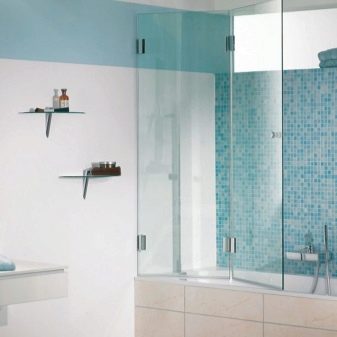
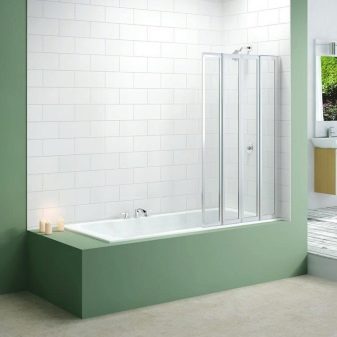
Designers appreciated such material and often use it in the manufacture of elements for the bathroom. You can choose products of various colors and textures. The consumer is offered tinted, color and print models. The dye is added directly to the glass, so the surface is painted evenly.
Some consider the classic transparent transparent screen a classic. It does not allow you to hide, but also looks easy in any design. The lack of visual effect allows you not to break the room into zones. If you want to achieve the opposite effect, you can use frosted glass.
A decorative function is performed by a patterned or colored partition.
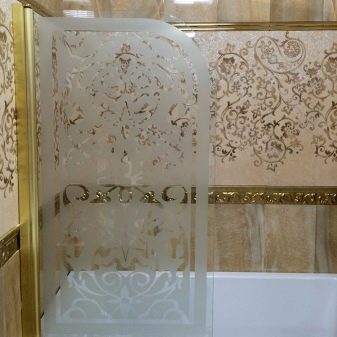
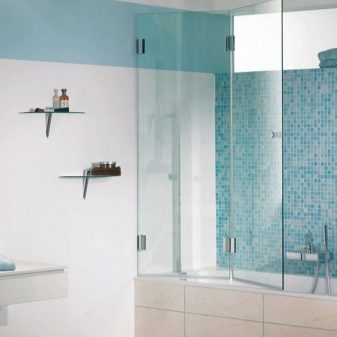
However, disadvantages also exist. The screen is made of thick and durable glass, but this does not mean that it can withstand any load. With considerable effort, the surface is still capable of cracking. In addition, installation problems may occur if the walls in the bathroom are not even enough.
Dimensions
With regard to size, it is difficult to unequivocally answer this question. They can be selected individually: high and low, wide and narrow options are popular.
However, it is customary to consider screens 170 cm high as the standard.

In some cases, it is appropriate to use casements with a height of 140 cm. One casement has a width of 40 cm. There are other models where this indicator can be 70 cm. Products that have other dimensions, for example, 90x110 cm, can also be installed on the side of the bathroom.
In general, the values can be very different. They depend on how deep the bowl and what is the height of the ceilings in the apartment or house.
Criterias of choice
When choosing screens should pay attention to a number of criteria.
- It is worth deciding on the number of wings. The indicator will depend on the length of the bathroom and the size of the wings.
- An important role is played by the quality of the design. It is better to opt for the products of well-known and reputable manufacturers. Glass thickness should be at least 6 mm. The plastic surface may be slightly thinner, but not less than 4 mm.
- It is very important that the fasteners are not satisfactory. Fixing points are also important. The screen can be attached both to the sides of the bathtub and to the walls.
- The user needs to solve the issue of material transparency.. If the bathroom is combined, it is better to stay on tinted surfaces. They will visually be able to zone space.
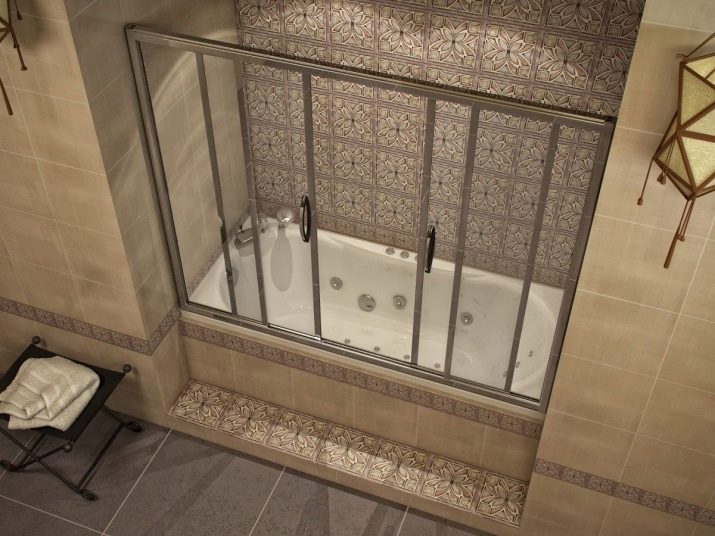
Care Rules
Usually caring for bathroom screens is straightforward. However, there are a number of rules that should be followed. The appearance of the product, as well as the period of its operation, will depend on their implementation.
- After water procedures, leave the screen open. This will help to prevent moisture buildup.
- Any compositions can be used to clean the glass, but plastic will not tolerate contact with aggressive household chemicals. Of course, you should abandon the abrasive components.
- The sliding mechanism will need to be lubricated periodically. Seals should also be inspected to prevent mold and mildew. In some cases, replacement may be required.
If you deliberately choose a product, as well as follow the recommendations for caring for it, it will delight consumers for a long time, and will also become a highlight of the room.
See how to set up a bath screen with your own hands in the video presented.
